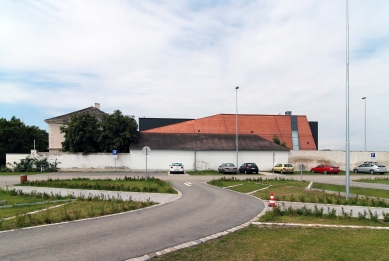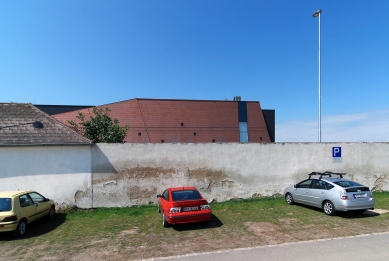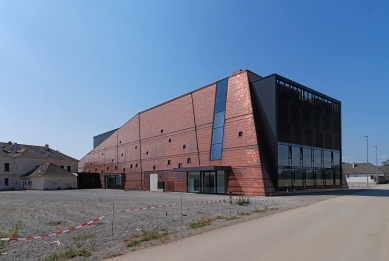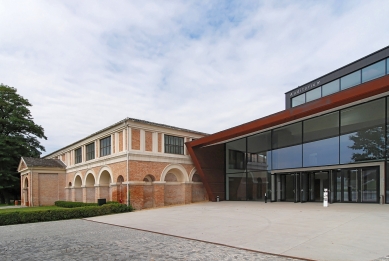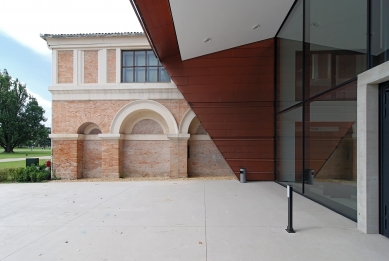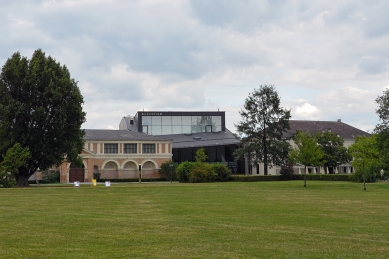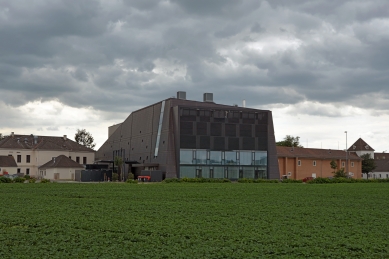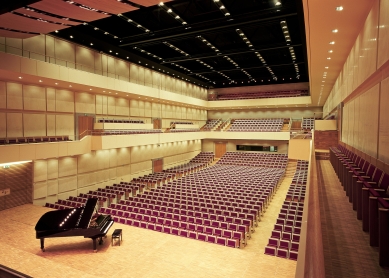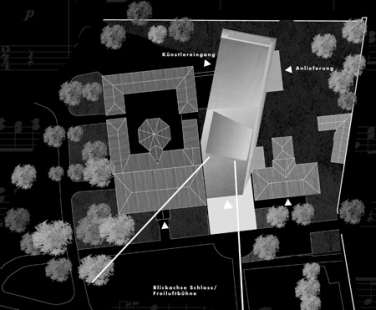
Schloss Grafenegg Concert Hall
Grafenegg Auditorium

Since extensive building works were completed in 2008, Schloss Grafenegg has been developed into an internationally renowned cultural venue. After an EU-wide competition was staged, five internationally renowned architects were invited to present their designs for a concert hall to hold an audience of 1,200 which was to be integrated into the castle's historical, heritage-protected "old riding school" buildings. The entry from architekten schröder schulte-ladbeck was awarded 1st prize by the jury because of its visionary and historically sensitive design. The design envisaged a solitary building connected to the "old riding school" by glass crossings.
The architect duo, schröder schulte-ladbeck, based in Dortmund, Germany is known for designing concert halls and for its unusual solutions; the Dortmund Concert Hall, which the duo designed, is counted among the ten best concert halls in the world. The result of the Grafenegg project once again emphasises the architects' extremely sensitive commitment to the existing buildings and the surrounding grounds. The new building fits perfectly into the park grounds and also sets convincing acoustic benchmarks. Keywords for the design concept, which is based on a musical fugue, were form, number, dimension, proportion, material and colourfulness. The latter found its most significant expression in the design of the building's façade, which originally was to be carried out in pre-weathered copper to match the existing materials of the historical structure.
However, the cladding that was eventually chosen, made from TECU® Classic copper sheets, gave the colour aspect an appropriate temporal component: at the opening ceremony the façade shone brightly in copper red, but soon the weather-related changes in the surface that are typical of copper caused the sheets to develop brown and anthracite hues.
Through oxidation the copper has now developed its natural protective coating. Depending on how the light falls, the façade presents itself in many lively shades and the surfaces will continue to change for many years to come – until the symbiosis with the historical surroundings is complete when the surfaces have developed the patina green that is typical for copper.
The architects saw the theme for realising the project as transforming the immateriality of music and acoustics into material cubic content and in applying the laws of the fugue to the architectural form. The existing buildings and the castle grounds placed especially high demands in terms of integrating the new design into the historical ensemble.
The cubic content of the building was developed with consideration of the limits and heights of the surrounding buildings, while the basic structure was formed from the composition of the enclosed hall and the surrounding functional and connecting areas. The visual relationships in the park and to the castle were consistently taken into account; the cubic content communicates ideally with its environment.
The architect duo, schröder schulte-ladbeck, based in Dortmund, Germany is known for designing concert halls and for its unusual solutions; the Dortmund Concert Hall, which the duo designed, is counted among the ten best concert halls in the world. The result of the Grafenegg project once again emphasises the architects' extremely sensitive commitment to the existing buildings and the surrounding grounds. The new building fits perfectly into the park grounds and also sets convincing acoustic benchmarks. Keywords for the design concept, which is based on a musical fugue, were form, number, dimension, proportion, material and colourfulness. The latter found its most significant expression in the design of the building's façade, which originally was to be carried out in pre-weathered copper to match the existing materials of the historical structure.
However, the cladding that was eventually chosen, made from TECU® Classic copper sheets, gave the colour aspect an appropriate temporal component: at the opening ceremony the façade shone brightly in copper red, but soon the weather-related changes in the surface that are typical of copper caused the sheets to develop brown and anthracite hues.
Through oxidation the copper has now developed its natural protective coating. Depending on how the light falls, the façade presents itself in many lively shades and the surfaces will continue to change for many years to come – until the symbiosis with the historical surroundings is complete when the surfaces have developed the patina green that is typical for copper.
The architects saw the theme for realising the project as transforming the immateriality of music and acoustics into material cubic content and in applying the laws of the fugue to the architectural form. The existing buildings and the castle grounds placed especially high demands in terms of integrating the new design into the historical ensemble.
The cubic content of the building was developed with consideration of the limits and heights of the surrounding buildings, while the basic structure was formed from the composition of the enclosed hall and the surrounding functional and connecting areas. The visual relationships in the park and to the castle were consistently taken into account; the cubic content communicates ideally with its environment.
0 comments
add comment


